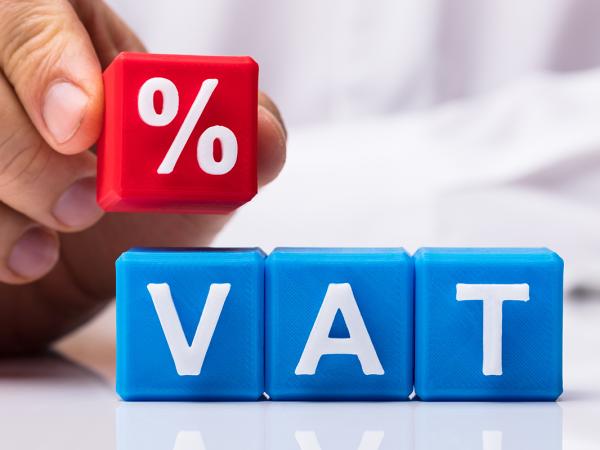Reporting and paying VAT
The introduction of Making Tax Digital (MTD) for VAT was the first phase of HM Revenue & Customs’ (HMRC) ‘Making Tax Digital’ program. It was introduced in stages beginning in April 2019 and since April 2022 all VAT registered businesses, other than those which are exempt, are in scope of the MTD for VAT rules.

Content on this page:
Overview
The regime applies to all businesses that are VAT registered unless HMRC have agreed they are exempt (see the section Exemption from MTD for VAT below).
The main elements to the MTD for VAT rules are:
- a requirement to keep business records in a digital format, incorporating digital links where necessary. We explain this in more detail under the heading Keeping records digitally below.
- a requirement to file the VAT return using API (application programming interface) enabled software. We explain more about this under the heading Filing a VAT return in MTD for VAT below.
Once you join MTD for VAT, you must stay in the regime even if your turnover drops below the VAT registration limit unless you decide to cancel your VAT registration.
Anyone registering for VAT for the first time will be automatically registered for MTD for VAT at the same time. If you want to apply for exemption from MTD for VAT you should contact HMRC and ask them how to proceed with the registration in this situation.
Exemption from MTD for VAT
Exemption from the Making Tax Digital (MTD) for VAT programme is available if you meet one of three criteria:
- It is not ‘reasonably practicable’ for you to use digital tools to keep your business records or submit your VAT Returns because of age, disability, remoteness of location or for any other reason;
- you or your business are subject to an insolvency procedure; or
- your business is run entirely by practising members of a religious society or order whose beliefs are incompatible with using electronic communications or keeping electronic records.
There is guidance on how to claim exemption from MTD for VAT on GOV.UK, and HMRC have also produced more detailed information on exemption in VAT Notice 700/22.
You should fully explain the reasons why you believe you meet one of the exemption criteria and then HMRC will write to you to advise whether your claim has been successful. If it is not successful, you may be able to appeal against the decision and the way to do this will be set out in HMRC’s response to you. You do not have to comply with the MTD for VAT rules while your claim is being considered or while an appeal is being made. You will need to contact HMRC to discuss how they wish you to file returns while you await the outcome of your application or appeal.
If your claim for exemption is granted, you will need to arrange with HMRC how to file your VAT returns going forward. It is likely they will ask you to either call the helpline so that the figures can be taken down by HMRC and then entered onto the VAT system, or possibly allow you to complete paper returns. HMRC can offer specialist support with VAT to vulnerable taxpayers though their Extra Support (EST) Service.
If a claim for exemption is ultimately unsuccessful, you will have to meet the MTD for VAT requirements (as set out in the section Overview above) as soon as possible going forward.
If you were already exempt from filing your VAT returns online, then you continue to be exempt from the MTD for VAT requirements and you do not need to reapply for exemption.
If you think you could be exempt but are happy to follow the new MTD for VAT process, you can choose to do so if you wish.
The government is helping small businesses located in rural areas with improving their internet connection through gigabit vouchers where businesses can claim up to £2,500 if certain conditions are met. There are more details, including the qualifying terms and conditions, on the gigabit voucher website.
Keeping records digitally
The Making Tax Digital for VAT regime requires you to maintain business records digitally for VAT purposes in what is known as ‘functional compatible software’ and also to file your VAT returns using digital methods. This means that some kind of electronic record keeping system must be used. This could be an accounting software package, a spreadsheet-based system or maybe via an App on a smartphone.
Digital record keeping
Your digital record keeping system must also enable you to file the VAT return digitally with HMRC directly from within the software or by using bridging software.
See our information on digital record keeping on our Making Tax Digital for income tax page to read about things we suggest you need to think about when choosing software.
HMRC have published guidance to help with finding relevant software. This includes a tool which may help you to select a product which is most suitable for your business. The current version of the tool is rather basic, but it is continuing to be developed and changes are made to it periodically by HMRC to improve its functionality.
Certain data from business invoices and receipts must be recorded digitally but the invoices and receipts themselves do not need to be scanned and saved digitally, although they can be retained in this way.
Digital links
If you use more than one software package to keep records and submit returns, you need to link them digitally. There are examples of software digital links and more information on the data that must be retained digitally in functional compatible software on GOV.UK.
Filing a VAT return in MTD for VAT
As part of MTD for VAT, you must file your VAT return using your software unless HMRC have agreed you are exempt (as per our guidance above).
The ‘functional compatible software’ must be used to file the VAT return with HMRC. Most accounting packages will have this functionality built in. However, if you use spreadsheets this will not be the case, and therefore you will need to purchase bridging software which will link your spreadsheet to HMRC’s systems and enable the VAT return to be filed. In these circumstances, the combination of the spreadsheet and the bridging software will constitute the ‘functional compatible software’.
Remember that the Making Tax Digital regime is an administrative system and so the figures required for the VAT return itself remain the same and so your VAT payments/refunds will continue to be worked out in the same way as under the previous filing system.
The due dates for submission of the VAT return and payment of the VAT all remain the same too.
If you will not be able to pay your VAT on time you may be able to set up a payment plan to pay in instalments. If you are struggling to file the VAT return itself then you will probably need to seek help from the software provider in the first instance, as the problem is most likely to be to do with using the software itself rather than an issue which HMRC can help you with.
More information
GOV.UK has information on VAT generally including: deadlines for filing and payment, reclaiming VAT, VAT visits and inspections, and using VAT online services.
HMRC’s collection of guidance on Making Tax Digital for VAT is also available on GOV.UK.
VAT notice 700/22 has detailed information on the Making Tax Digital programme.
HMRC have developed a series of webinars and videos to help you understand Making Tax Digital for VAT.



